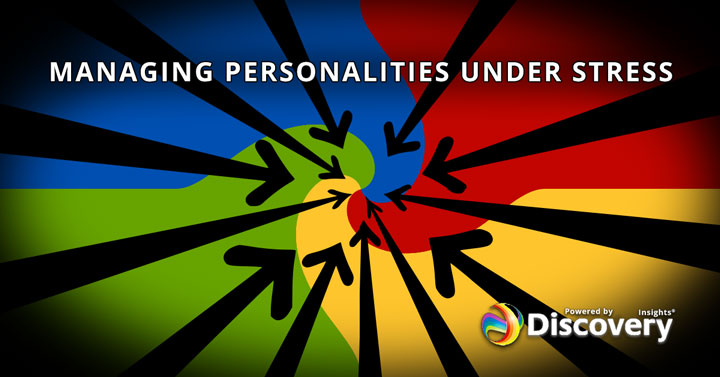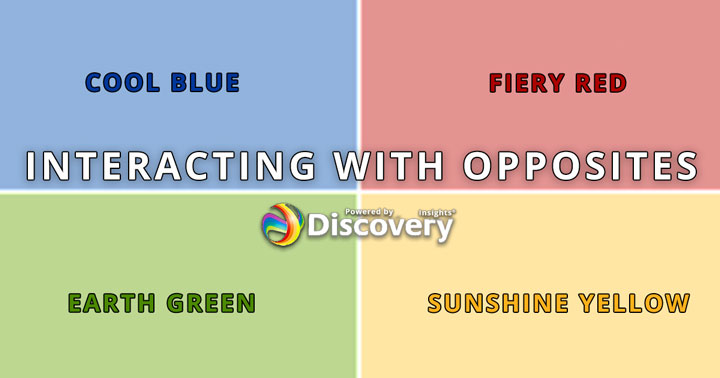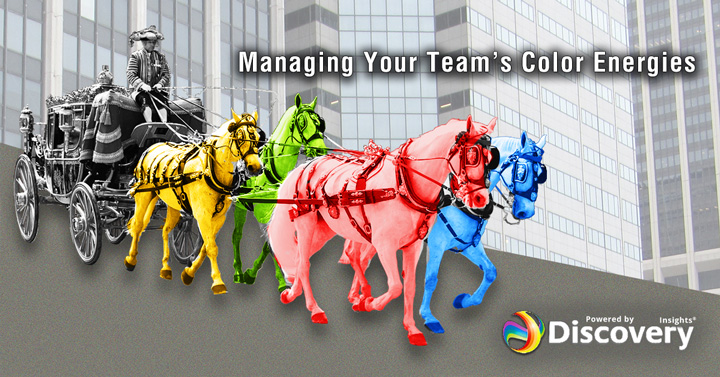Stress and Insights Discovery

When discussing personality types, it is important to remember that people will express their personality traits in different ways depending upon the environment that they are currently in. For example, Insights Discovery is based around personality assessment for a business environment, so it reflects people’s personality style at work more than when they are at home. A key psychological factor which can have a large influence on personality traits is stress: people will express different aspects of their personalities and will react in a more extreme way when they are stressed. So how does stress and insights discovery color energies interact?
As work can frequently be stressful, it is helpful for managers to have an understanding of how different personality types react to stress, what those stressors are, and how managers can help to alleviate this stress.
How stress and Insights Discovery interact?
Cool Blues and Stress
Cool blues are cautious and thoughtful, and they like to plan in advance. Therefore, they are stressed by situations where there is a lack of structure for them to work within, or where they are missing important information which they need to do their job. They hate to turn in work that is of low quality, so they do not like to be rushed and will be unhappy if they feel their work is not up to par. They also value efficiency and exactness, so they will feel frustrated by wasting time.
A manager can tell when a cool blue is stressed because they will nitpick over details and question the worth or efficiency of a process. They may become obstinate and dig in their heels if they feel they do not have the information that they need to complete a task.
If they feel they are not getting the support they need, they can stop communicating and start making decisions without approval from higher ups. This stress can be managed by getting feedback from them along the course of a project, making sure they have the information that they need, and working with them to analyze inefficiencies in processes.
Earth Greens and Stress
Earth greens care most of all about fairness and positive interpersonal relationships, so they will feel stressed when they perceive there is unfair or impersonal treatment of themselves or others. They care deeply about their ethical values so asking them to bend the rules is another cause of stress for them. They also value a calm and supportive atmosphere so they may become stressed by loud environments, frequent interruptions, or feeling that they are under excessive time pressure.
When an earth green is feeling stressed they will tend to withdraw into themselves and become overly cautious. They may be personally hurt by the unfair treatment of someone else, even if it does not directly affect them, and this hurt can be expressed in a judgmental way. They may see themselves as the only one who cares about their values.
To manage a stressed earth green, a manager needs to take time to support them in person. There should be plenty of face-to-face contact, and the manger should reiterate that they understand the earth green reacts this way out of a sincere desire for fairness.
Where necessary, a manager should be transparent and acknowledge that decisions are not always perfectly fair. But they should then convey that this needs to be kept in perspective – overall, management cares about being fair and takes steps to implement this value as much as possible.
Sunshine Yellows and Stress
Sunshine yellows are sociable and outgoing, so they become stressed and unhappy when they have no opportunities for personal interactions or for fun. While seeing co-workers joking around might seem like a waste of their time, these moments of joviality are essential for the job satisfaction of a sunshine yellow. They can also feel stressed by rigidity and a lack of flexibility, and they can become hurt by what they perceive as personal rejection from co-workers.
The warning signs of stress from a sunshine yellow are that they become overly emotional, even melodramatic. They may become opinionated and argumentative when they feel that they are being excluded from the group. To mitigate this, a manager should allow as much flexibility as possible so the sunshine yellow can prioritize and organize their own tasks.
If they become overly fixated on a feeling of exclusion, a manger can re-direct their energies onto a new task which can be an effective distraction. Sunshine yellows highly value approval so they should be allowed to save face and maintain their reputation wherever possible.
Fiery Reds and Stress
Fiery reds care about action and decisiveness, so they are stressed by a lack of focus and a lack of control. Waffling, u-turns, and indecision are frustrating to them because they throw themselves fully into a project and they do not like having to readjust their goals. When a fiery red is stressed they will double down on their decisive and confident traits, and they can become aggressive, demanding, and overbearing. They can become snappy or rude to co-workers and they will be visibly impatient when they think a decision is taking too long.
To handle a stressed-out fiery red, a manager can take two different approaches. The first is to allow the fiery red to take control of the project or process, and trust that they will push forward until a decision is made. This is a good approach for an experienced and trusted fiery red.
The alternative approach, if the manager is not confident in the fiery red’s ability to lead yet, is to get them to take time out away from the project. Now might be a good time to send them on a training course or to learn a process from another department. Or they could be directed to a different aspect of the project which requires immediate action, which will give them something to do while further decisions are being made.
To learn more about stress and insights discovery and how personality assessments can benefit managers & employees, visit www.discoveryourself.com.









